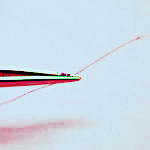Probative Value and Prioritization
Identifying Potential DNA Evidence
Typical sources of DNA include blood, saliva, semen, hair and touch evidence. Sources of DNA can be present on a variety of surfaces including food items, hats, bottles, cans, clothing, glasses, shoes, tape, cigarettes, etc.
To aid in determining what evidence could potentially contain DNA useful to an investigation, investigators should have a basic understanding of the principles of DNA and the processes used by the laboratory to analyze submitted samples.7



7 Simon Ashikhmin, Susan G. Berdine, Mitchell R. Morrissey, and Greggory S. LaBerge, Effectiveness and Cost Efficiency of DNA Evidence in Volume Crime Denver Colorado Site Summary PDF download: 80kB


